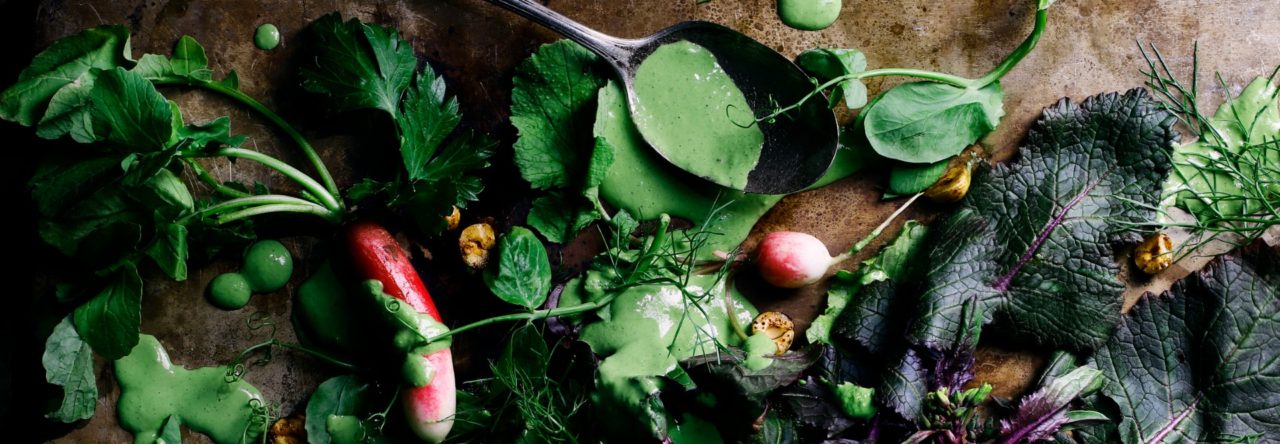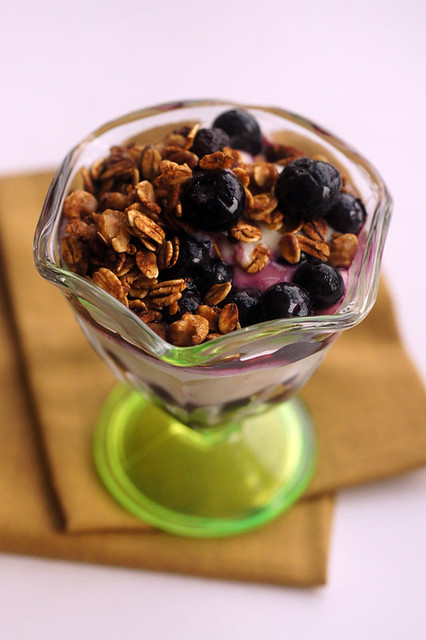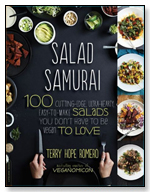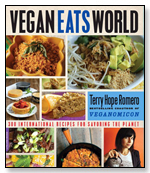Busy week? Too busy download the new Skyrim add-on Dragonborn? Well I totally understand! Between Vegan Eats World related activities, various food experiments, holiday shenanigans and meditating on what my next book is going to be, my next major video game fix is still on hold. But not so much that I can’t get my vicarious Skyrim-fix via cooking.
For those who don’t know, Skyrim characters can engage in in-game cooking. While it’s not essential for a “power gaming” experience, it’s a fascinating virtual pastime for real life cooks like me: find those ingredients (be it a village market or stolen from a musty dungeon), stir and tap a pot (in your thatched-roof hut, massive stone villa or a over a bandit’s campfire), and violá, you have a stew or soup or fondue that will fuel your trek through the woods and mountains. Or scarf it down while running away from frost trolls. As normally with a home cooked meal.
Apple cabbage stew is an actual Skyrim in-game staple, one of the first things my character cooked (ask me about my character in comments if you dare), and one of the few vegan offerings in this snowy, pixely land. The in-game the recipe is fairly bare bones and requires only 1 cabbage, 1 red apple, 1 salt pile. Mine is expanded and enriched, but with ingredients commonly found in Skyrim and things I’d imagine that a mythical, vaguely Nordic/European land to harbor: leeks, shallots, garlic, dill or thyme, and yummy caraway seeds. The resulting stew is soothing, mellow and slightly sweet; I love eating it with a hearty sourdough rye bread, perhaps paired with a tart cashew cheese spread or white bean dip for a complete meal.
This vegetable-fruity soup is light fare indeed; use the heartiest, richest vegetable broth you can find for the best flavor possible. If that’s something you make yourself good for you, but don’t be afraid to make a strong batch of Better Than Bouillon veggie broth. I’ve made it with either fresh dill or fresh thyme for variety and occasionally tossed in a diced unpeeled red potato or a handful of cooked white beans for heft, but I like the simplicity of the basic soup best. Top each serving with a dollop of plain vegan yogurt for cool, creamy contrast.
So put down that skanky roasted skeever tail, hang up your ebony shield, kick back by the fireplace and dig into a bowl of tasty good for ya stew tonight!
Apple Cabbage Stew
Serves 6 Wood Elves or 4 Nords or 2 Orcs or 1 Giant
The simplicity of this recipe requires the freshest cabbage, apples and leeks you can find, making this the ideal concoction to use up produce seen at the farmer’s market during the winter or from a winter CSA share.
- About 1/2 pound green cabbage, core removed (4 generous cups roughly chopped green cabbage)
- 2 firm, tart red cooking apples, unpeeled
- 1 tablespoons olive oil or vegetable oil
- 1 large leek, cleaned and finely chopped
- 2 shallots, peeled and finely diced
- 2 cloves garlic, peeled and minced
- 1 1/2 teaspoons caraway seeds
- 6 cups rich vegetable broth
- 2 bay leaves
- 1 teaspoon dried marjoram
- 1 teaspoon smoked sea salt
- 2 tablespoons finely chopped fresh dill or 2 teaspoons dried dill OR 4-6 springs fresh thyme or 2 teaspoons dried thyme
- Abundant freshly ground black pepper and smoked salt to taste
- Plain soy yogurt, additional chopped fresh dill for garnish
1. Slice the cabbage in half, then slice lengthwise into thick strips. Slice the cabbage horizontally to make 1 inch wide pieces. Slice the apples into quarters, slice away the stem and seeds, then chop the apples into 1/2 inch cubes.
2. In a 2 quart soup pot preheat the oil over medium heat, then stir in the leek, shallots and garlic. Sauté for 5 minutes or until the vegetables are softened, then stir in the caraway seeds. Fry for another 2 minutes, then add the broth, bay leaves, marjoram, salt and cabbage. If using dried dill, dried thyme, or fresh thyme sprigs, add these now too.
Increase the heat to high and bring to an active simmer for 3 minutes, then turn the heat down to medium-low. Partially cover and simmer the soup for 15 minutes or until cabbage is tender.
3. Stir in the apples, partially cover and simmer another 8 to 12 minutes or until the apples are tender (simmer less for firmer apples, more for very soft, tender pieces). Turn off the heat. If adding fresh dill, stir this in and cover. Rest the soup for about 10 minutes, uncover and taste the broth; adjust the seasonings with more black pepper and salt as needed.
4. Serve the soup hot ladled into wide bowls, and if desired top with a spoonful of plain soy yogurt and a sprinkle of chopped fresh dill.
















